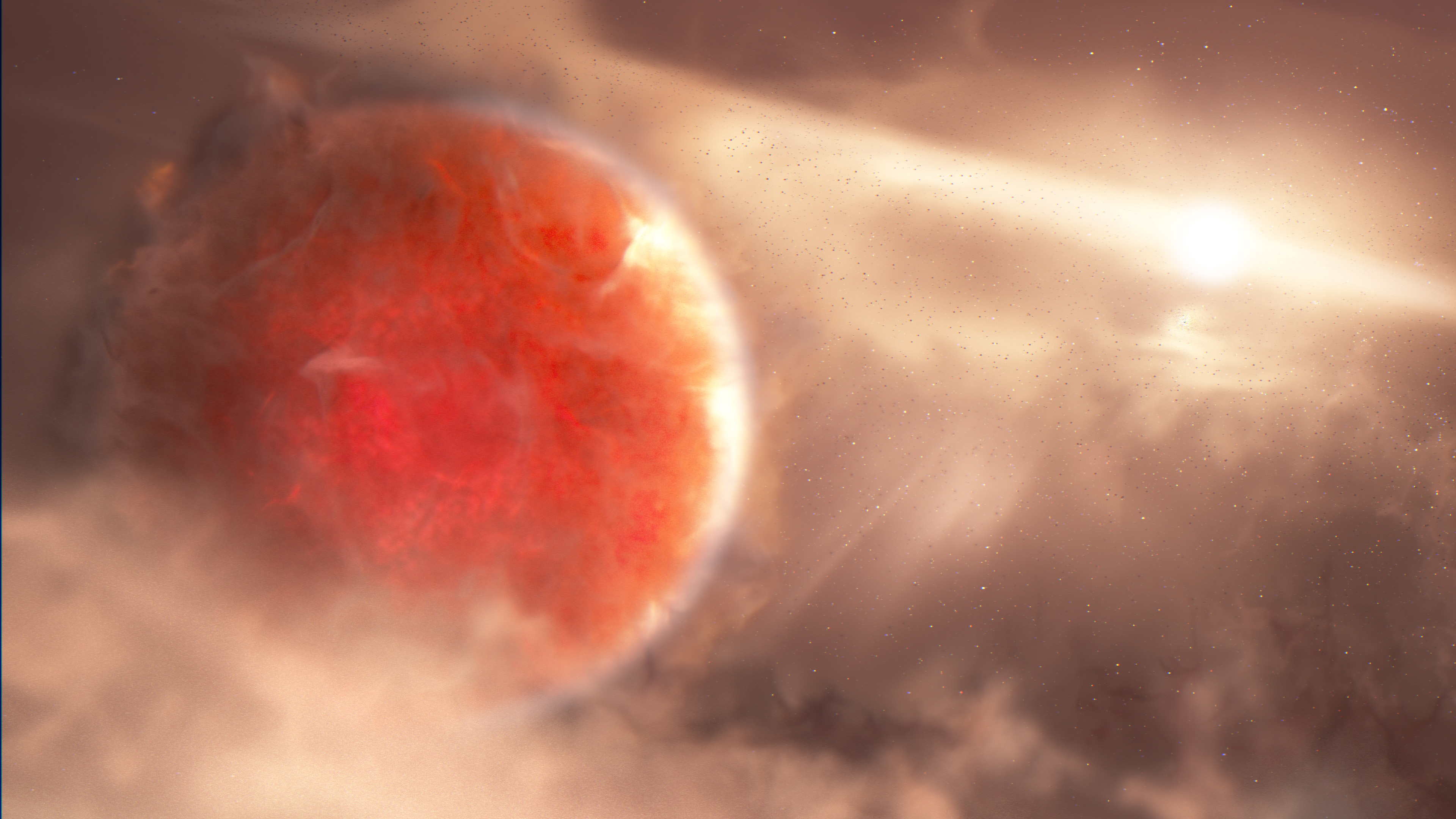Hubble spots young gas giant forming in an 'intense and violent' way
The Hubble Space Telescope has spotted a young Jupiter-like protoplanet that’s supporting an unusual planetary formation theory, according to a new study.
The subject of the image is the planet AB Aurigae b, a young gas giant located some 531 light-years away from our sun that’s estimated to be about 2 million years old. Scientists know that gaseous and rocky planets form from material gathered around a star in what’s called a circumstellar disk.
But AB Aurigae b seems to be bucking long-held theories about the mechanics of planetary formation due to its size and location. In fact, according to the researchers who found this exoplanet, it seems to support an unusual planetary formation theory known as "disk instability" — one that’s been described as "intense and violent."
Related: The best Hubble Space Telescope images of all time!
For jovian planets, the most widely accepted planetary formation theory is core accretion which is "a bottom-up approach where planets embedded in the disk grow from small objects — with sizes ranging from dust grains to boulders — colliding and sticking together as they orbit a star. This core then slowly accumulates gas from the disk,"according to a statement describing this new study.
AB Aurigae b, however, orbits its star at a distance of 8.6 billion miles, which is more than twice as far as Pluto is from our sun. Given that distance, scientists would expect a planet like AB Aurigae b to take an extremely long time to form. But the protoplanet is already nine times more massive than Jupiter is, and at a very young age. Scientists believe that this is only possible through a different method called the "disk instability" approach.
This approach is"a top-down model where as a massive disk around a star cools, gravity causes the disk to rapidly break up into one or more planet-mass fragments," according to the same statement.
Breaking space news, the latest updates on rocket launches, skywatching events and more!
To come to the conclusion that this exoplanet formed from this alternative method, researchers compared the data from Hubble’s image of AB Aurigae b with data from the ground-based planet imaging instrument SCExAO on Japan's Subaru Telescope in Hawaii.
"The wealth of data from space and ground-based telescopes proved critical, because distinguishing between infant planets and complex disk features unrelated to planets is very difficult," according to the statement.
In fact, it’s not just Hubble’s newest images that were used in the study — lead researcher Thayne Currie of the Subaru Telescope and Eureka Scientific noted that Hubble archival data was crucial to the findings. "We could not detect this motion on the order of a year or two years," he said. "Hubble provided a time baseline, combined with Subaru data, of 13 years, which was sufficient to be able to detect orbital motion."
With so much data from the two instruments, scientists were able to confirm their core accretion theory, though further observations will likely be made using the James Webb Space Telescope after it comes online later this year.
This study was published on April 4 in Nature Astronomy.
Follow Stefanie Waldek on Twitter @StefanieWaldek. Follow us on Twitter @Spacedotcom and on Facebook.

Space.com contributing writer Stefanie Waldek is a self-taught space nerd and aviation geek who is passionate about all things spaceflight and astronomy. With a background in travel and design journalism, as well as a Bachelor of Arts degree from New York University, she specializes in the budding space tourism industry and Earth-based astrotourism. In her free time, you can find her watching rocket launches or looking up at the stars, wondering what is out there. Learn more about her work at www.stefaniewaldek.com.

